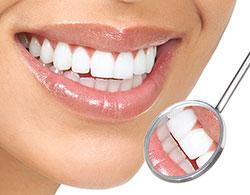 Find out more about this dental procedure, and how it could protect your damaged tooth.
Find out more about this dental procedure, and how it could protect your damaged tooth.
While some decaying teeth are treated either with filling or crowns, there are some cases in which your San Jose dentists, Drs. Nidhi Sikka and Mona Chattha, may recommend having an inlay or onlay instead to protect your tooth. Find out more about inlays and onlays and what the procedure entails.
What are inlays and onlays?
Inlays and onlays are somewhere between a dental filling and a crown. Inlays fill the space between the cusps of the tooth’s chewing surface, while onlays cover one or more cusps, or sometimes the entire surface of the tooth.
What are they used for?
Inlays and onlays are to fillings and are used to restore decayed or damaged portions of a tooth.
What are inlays and onlays made of?
Inlays and onlays can be made from everything from gold to composite resin to porcelain. Porcelain tends to be the most popular choice since it most closely resembles the look of a natural tooth.
What does it take to get an inlay or onlay from my San Jose dentists?
Your San Jose dentists Drs. Sikka and Chattha will administer a local anesthesia to numb the area prior to treatment. Then we will drill out the decayed portions of the tooth. Once this is complete, we will take impressions of your tooth using dental putty. These impressions will then be sent to a dental lab where they will make your custom-made inlay or onlay.
During your second visit we will fit you with your new inlay or onlay. Once it is fitted properly we will then bond it to your tooth. Some patients experience minor soreness around the treated area for a couple days afterward.
How do you care for inlays and onlays?
This dental work doesn’t require special care. Treat them just as you would the rest of your natural smile and make sure to brush and floss every day. You should also continue to see your San Jose dentists Drs. Sikka and Chattha every six months for exams to make sure that your inlay or onlay is doing well.
The best way for us to catch decay before it causes significant damage is to see you every six months for exams and cleanings. If it’s time for your upcoming cleaning, then call your San Jose dentist. Don’t ignore signs of decay!






